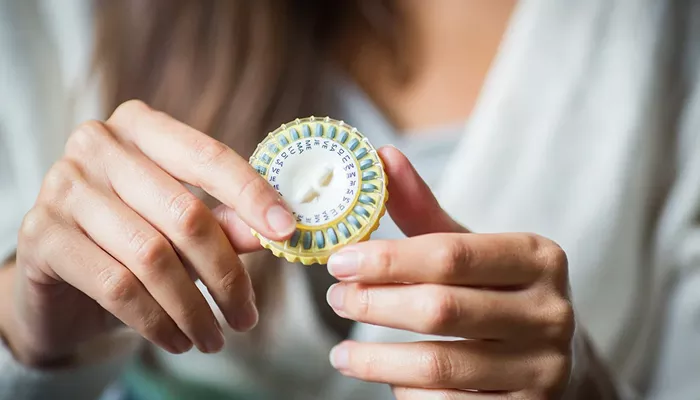Hormone Replacement Therapy (HRT) is a treatment used to relieve symptoms of menopause in women. As women age and their bodies produce less estrogen and progesterone, they may experience symptoms such as hot flashes, mood swings, and vaginal dryness. HRT helps to balance hormone levels and manage these symptoms effectively.
However, there are various types of HRT, and the right one for each woman depends on several factors, including age, health status, and whether or not they have had a hysterectomy. Understanding these 7 types of HRT can help women make informed decisions about their treatment options.
7 Types Of Hormone Replacement Therapy
1. Estrogen-only HRT
Estrogen-only HRT is typically prescribed to women who have had a hysterectomy. Since they no longer have a uterus, they do not need progesterone, which is typically included in HRT to protect the uterus from the potential cancer-causing effects of estrogen. Estrogen-only HRT helps relieve menopausal symptoms like hot flashes, night sweats, and vaginal dryness by replacing the estrogen that the body no longer produces.
Benefits
- Effective in reducing hot flashes and other menopausal symptoms.
- Can improve vaginal dryness and discomfort during intercourse.
- May prevent osteoporosis (bone thinning).
Risks
- May increase the risk of uterine cancer in women who have not had a hysterectomy.
- Can increase the risk of blood clots, stroke, and heart disease.
2. Combined HRT (Estrogen and Progesterone)
For women who still have their uterus, combined HRT is commonly prescribed. This type of therapy includes both estrogen and progesterone (or progestin, a synthetic version of progesterone). The progesterone component is essential for protecting the lining of the uterus and preventing endometrial cancer, which can result from taking estrogen without progesterone.
Benefits
- Reduces menopausal symptoms effectively.
- Protects against endometrial cancer in women with a uterus.
- Can prevent bone loss and osteoporosis.
Risks
- May increase the risk of breast cancer, blood clots, and stroke.
- Some women may experience side effects such as bloating, mood swings, or headaches.
3. Bioidentical HRT
Bioidentical hormones are man-made hormones that are chemically identical to those the body produces naturally. Bioidentical HRT is often marketed as a more natural option, as it uses hormones that are derived from plant sources, like soy or yams. These hormones are then customized to fit an individual’s specific needs.
Benefits
- Some women feel that bioidentical hormones are safer and more effective because they are identical to the body’s natural hormones.
- Customizable dosages based on individual needs.
Risks
- The safety and effectiveness of bioidentical HRT are still debated among healthcare professionals.
- There is a lack of large-scale studies on the long-term effects of bioidentical hormones.
4. Low-dose HRT
Low-dose HRT is a form of hormone replacement that uses smaller amounts of hormones compared to standard HRT treatments. This type of therapy may be recommended for women who have mild symptoms of menopause or who want to reduce the risks associated with higher doses of hormones.
Benefits
- Lower risk of side effects compared to standard HRT.
- Can still provide relief from menopausal symptoms.
- May be used for a shorter duration to minimize risks.
Risks
- May not be as effective for women with more severe menopausal symptoms.
- Possible risks, although lower, still include blood clots, stroke, and breast cancer.
5. Local HRT (Topical Estrogen)
Local HRT involves the application of estrogen directly to the vaginal area. This treatment is often used for women who experience vaginal dryness or discomfort during intercourse but do not have other menopausal symptoms. Local estrogen is typically applied in the form of creams, tablets, or rings.
Benefits
- Targets the specific area of discomfort, with minimal systemic effects.
- Helps relieve vaginal dryness and painful intercourse.
- Lower risk of side effects compared to systemic HRT.
Risks
- May still cause some side effects, such as breast tenderness or headaches.
- Not as effective for other menopausal symptoms like hot flashes.
6. Testosterone Therapy
While testosterone is commonly associated with men, it also plays a role in women’s health. Some women may experience a decrease in libido and energy levels during menopause, and testosterone therapy can be used to address these symptoms. However, testosterone therapy is less commonly used compared to estrogen-based HRT.
Benefits
- Can improve sexual desire and energy levels.
- May enhance mood and cognitive function.
Risks
- Can cause unwanted side effects, such as excessive hair growth, acne, or voice deepening.
- Long-term effects are still not fully understood.
7. Transdermal HRT (Patches, Gels, or Sprays)
Transdermal HRT is delivered through the skin using patches, gels, or sprays. This method allows hormones to be absorbed directly into the bloodstream, bypassing the digestive system. Transdermal HRT is often recommended for women who cannot tolerate oral forms of HRT.
Benefits
- Lower risk of blood clots compared to oral HRT.
- Easy to use and convenient.
- Offers more consistent hormone levels.
Risks
- Skin irritation may occur at the site of application.
- May still increase the risk of other side effects, such as breast cancer or stroke.
Conclusion
Hormone Replacement Therapy is a helpful treatment for managing menopause symptoms. However, choosing the right type of HRT depends on an individual’s health, the severity of their symptoms, and whether or not they have had a hysterectomy. It is essential to consult with a healthcare provider to determine the best approach to HRT based on personal needs and risks. Whether you opt for estrogen-only therapy, combined therapy, or a more natural bioidentical option, understanding the available choices can help you navigate your menopause journey more effectively.
Related articles:
- How Much Does HRT Cost? A Complete Breakdown Of Treatment Prices
- What Is The Best HRT For Early Menopause?
- Exploring The Role Of Hrt In Managing Menopausal Joint Pain


